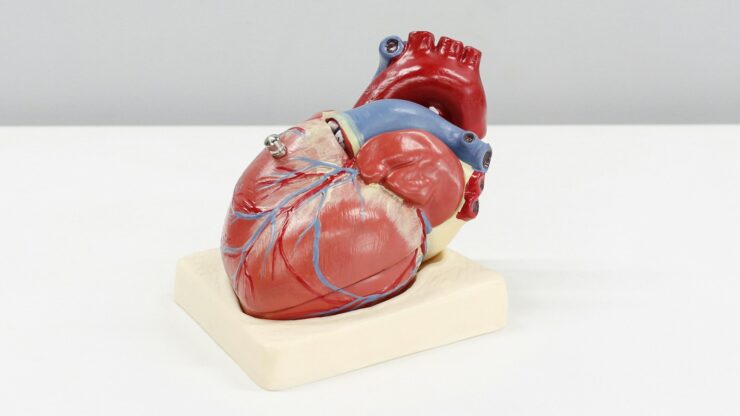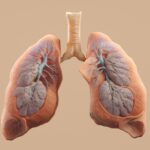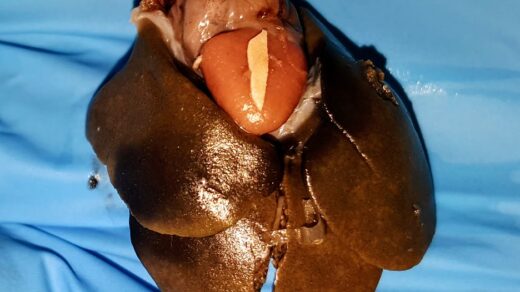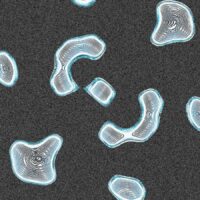
Modification of Aortic Arches in Vertebrates:-
✩Basic Embryonic Plan:-
1.Major Arterial Channels:
In a typical vertebrate embryo, the major arterial channels include a ventral aorta, a dorsal aorta, and usually pairs of aortic arches connecting the ventral aorta with the dorsal aorta.
2.Ventral Aorta:
Blood leaves the heart through the ventral aorta, which runs forward.
3.Aortic Arches:
The ventral aorta gives rise to 6 pairs of aortic arches at intervals, running through the visceral arches.
All the efferent branchial arteries of the arches dorsally join a lateral dorsal aorta or an internal carotid artery.
4.Lateral Dorsal Aortae:
The two lateral dorsal aortae unite just behind the pharynx to form a single median dorsal aorta, which continues behind into the tail region as the caudal artery.
✩Comparative Anatomy:-
1.Rotational Lateral Dorsal Aortae:
Although the arterial system of all adult vertebrates shows major differences, it is actually built according to the same basic architectural plan seen in the vertebrate embryo.
✩ Primitive Vertebrate Condition:-
1.Branchiostoma (Lancelets):
Nearly 60 pairs of aortic arches are present, connecting the ventral and dorsal aorta.
2.Petromyzon (Lampreys):
There are 7 pairs of aortic arches found.
3.Other Vertebrates:
In other vertebrates, the number of aortic arches ranges from 6(myxine) to 15 pairs(eptoterus).
Aortic Arches in Fishes: General Structure and Evolution
🐋Primitive Elasmobranchs:-
Primitive elasmobranchs, such as Heptanchus, have seven pairs of aortic arches.
🐋Fish Embryos:-
Embryos of fish typically exhibit a primitive plan with six or more pairs of aortic arches. These arches pass through the gill area and typically have six pairs.
🐋Specific Groups:-
1.Elasmobranchs (Sharks and Rays):-
Most elasmobranchs retain only five pairs of aortic arches (I, II, IV, and VI).
The first gill slit forms the spiracle, and the first arch is often non-functional or absent.
2.*Bony Fishes (Teleosts):-
In adult bony fishes, the first and second aortic arches disappear.
The third, fourth, and sixth pairs remain functional, with the third and fourth pairs typically forming part of the arterial system.
3.Polypterus and Lungfishes:-
In Polypterus and lungfishes, the pulmonary artery arises from the efferent part of the sixth arch on each side, supplying blood to the air bladder.
In Protopterus, the third and fourth aortic arches are interrupted by gill capillaries.
Vascular Differentiation:-
🐋Elasmobranchs and Lungfishes:–
Each aortic arch forms one afferent and one efferent artery to each gill.
🐋Teleosts (Bony Fishes):-
Each gill has one afferent and one efferent artery.
Amphibians: Aortic Arches and Respiratory Adaptation
General Adaptation:-
Introduction of Lungs:-
Amphibians developed lungs as the main respiratory organ, reducing the role of gills.
Aortic Arch Modifications:-
Adaptations for Terrestrial Life :-
Reflect changes from aquatic life to a more terrestrial existence.
Living Conditions
Live in water, retaining external gills permanently alongside lungs.
Aortic System
Shows partial shift from fish-like structures.
Typically have four pairs of aortic arches (III-VI), though these can be incomplete, reduced, or absent in some species.
Carotid Arches
The III arch forms the carotid arteries.
Systemic Arches
The IV arch forms the systemic arteries.
Ductus Caroticus
Vascular connection between the III and IV arches.
Pulmocutaneous Artery
The VI arch supplies blood to the skin and lungs, connecting to the aorta via the ductus Botalli (ductus arteriosus).
Anurans (Tailless Amphibians, e.g., Frogs)
Larval Stage
Tadpoles have aortic arches adapted for gill respiration.
Metamorphosis results in significant changes as gills are lost.
Disappearance of Arches
Aortic arches I, II, and V disappear.
Disappearance of Ductus Caroticus
Leads to the carotid arch supplying oxygenated blood only to the head region.
Dorsal Aorta Contribution
The IV systemic arch connects to the dorsal aorta to distribute blood throughout the body, except to the head and lungs.
Disappearance of Ductus Arteriosus
Results in the VI arch supplying venous blood exclusively to the lungs and skin for purification.
Functional Arches in Adult Anurans
Functional Arches:- Exhibit only trace functional aortic arches (C 1).
Common Features with Higher Vertebrates:
These arches are analogous and retained by amniotes (higher vertebrates).
Reptiles: Aortic Arches and Respiratory Adaptations
Characteristics of Reptiles:
Reptiles are fully terrestrial vertebrates.
Gills are completely replaced by lungs; only those aortic arches are present.
Notable innovations in the aortic system include an elongated neck, a posteriorly shifted heart, and a partially divided ventricle.
Aortic System Modifications:
The ventral aorta and conus split into three trunks:
Two aortic (systemic) trunks and one pulmonary trunk.
The right systemic arch originates from the left ventricle, carrying oxygenated blood to the carotid arch and then to the head.
The left systemic arch originates from the right ventricle, carrying deoxygenated or mixed blood to the body through the dorsal aorta.
The pulmonary trunk also originates from the right ventricle, carrying deoxygenated blood to the lungs for purification.
Absent Structures:
The ductus caroticus and ductus arteriosus are generally absent in reptiles, except in certain snakes and lizards.
The ductus caroticus is present and the ductus arteriosus is found in some turtles.
Both ductus caroticus and ductus arteriosus are present in Sphenodon.
Cold-Blooded Nature:
Reptiles remain cold-blooded like amphibians and fishes.
This is due to the mixing of oxygenated and deoxygenated blood.
Birds and Mammals: Aortic Arches
1.Warm-Blooded Nature:
Birds and mammals are warm-blooded because their ventricles are completely divided, preventing the mixing of oxygenated and deoxygenated blood.
2.Development of Aortic Arches:
In embryos, six aortic arches develop, but only the 3rd (III), 4th (IV), and 6th (VI) persist in adults.
3.Arterial Structures:
The ventral aorta is replaced by two independent arteries or trunks: the systemic and pulmonary trunks.
Systemic Trunk:
In birds, the systemic aorta arises from the right ventricle.
In mammals, it arises from the left ventricle.
Pulmonary Trunk:
The 6th arch forms a single pulmonary trunk that carries deoxygenated blood from the right ventricle to the lungs.
4.Specific Arches:
Arch l :-
Remnants of lateral and ventral parts form the carotid arteries, which arise from the systemic aorta.
Arch IV:
In birds, it forms the right systemic aorta.
In mammals, it forms the left systemic aorta.
Arch VI:
Forms the pulmonary trunk.
5. Embryonic Structures:
The embryonic ductus arteriosus disappears after birth or hatching, forming the ligamentum arteriosum.

















